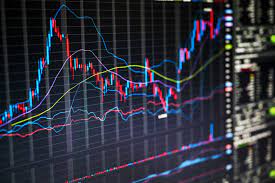As online trading continues to evolve, the financial world is on the brink of a groundbreaking development – the integration of online trading within the metaverse. The metaverse, a virtual, interconnected universe composed of digital environments, is poised to transform the way we engage with financial markets, offering a unique blend of real-world and digital experiences.
What is the Metaverse?
The metaverse is a digital reality that extends beyond gaming, combining augmented reality (AR), virtual reality (VR), blockchain technology, and social interaction to create a vast interconnected digital universe. Users can interact with each other and with virtual assets in ways that blur the lines between the digital and physical worlds.
The Intersection of the Metaverse and Online Trading:
online trading within the metaverse is an exciting and emerging concept. It involves using digital avatars to interact with financial markets, buy and sell assets, and engage with other traders in virtual trading spaces. While it may seem futuristic, this trend is gaining momentum rapidly and holds significant promise for the future of finance.
Key Features of Metaverse Trading:
Virtual Trading Spaces: In the metaverse, traders can access virtual trading floors or financial districts, complete with charts, data feeds, and interactive screens. This provides a unique environment for trading and collaboration.
Digital Asset Ownership: The metaverse enables users to own digital assets that represent real-world or virtual assets. These digital assets can be bought, sold, and traded within the virtual environment.
Immersive Analytics: Traders can use VR and AR technologies to visualize data in new ways. They can manipulate 3D charts and engage with financial data in a highly immersive manner.
Social Trading: The metaverse encourages social interaction, making it possible for traders to network, discuss strategies, and even engage in social trading in virtual spaces.
Challenges and Considerations:
While the metaverse has significant potential, it also comes with challenges, including cybersecurity concerns, the need for digital identity protection, and regulatory considerations. The convergence of real-world financial systems and digital assets within the metaverse necessitates robust regulatory frameworks to safeguard participants and their investments.
The Future of Metaverse Trading:
The integration of online trading within the metaverse is still in its early stages, but it holds immense promise. We can expect to see more trading platforms developing metaverse interfaces, greater adoption of blockchain technology for managing digital assets, and the use of AI for predictive analysis within these virtual environments.
In conclusion, the metaverse is rapidly becoming the next frontier for online trading, offering immersive, interconnected, and socially engaging experiences. While it presents numerous exciting opportunities, it also requires careful navigation of challenges and the establishment of regulatory guidelines. As the metaverse trading landscape continues to expand and mature, it has the potential to revolutionize the way we engage with financial markets, creating a more interactive and dynamic trading environment for traders worldwide.



